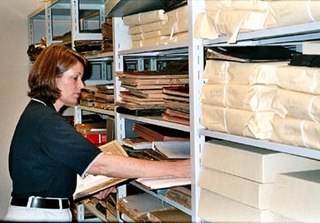
An officer of arms is a person appointed by a sovereign or state with authority to perform one or more of the following functions:

King of Arms is the senior rank of an officer of arms. In many heraldic traditions, only a king of arms has the authority to grant armorial bearings and sometimes certify genealogies and noble titles. In other traditions, the power has been delegated to other officers of similar rank.

The Bureau of Heraldry is the South African heraldic authority, established in Pretoria on 1 June 1963. It is headed by a State Herald and its functions are to register arms, badges, flags and seals, to keep a public register, to issue registration certificates and, since 1980, to advise the government on heraldic matters. Together with the Heraldry Council, it forms part of the National Archives and Records Service, which is currently under the authority of the Minister of Arts & Culture.

The Heraldry Council is part of the South African heraldic authority, established in Pretoria in June 1963, in terms of the Heraldry Act. It is the governing and policy-making body for the Bureau of Heraldry and consists of the National Herald ex officio, and other members appointed by the Minister of Arts and Culture. The Council is usually composed of heraldists, historians, state archivists, artists and, since the mid-1990s, African language specialists and writers.
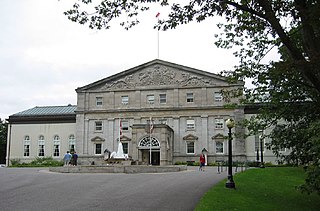
The Canadian Heraldic Authority is part of the Canadian honours system under the Canadian monarch, whose authority is exercised by the Governor General of Canada. The authority is responsible for the creation and granting of new coats of arms, flags, and badges for Canadian citizens, government agencies, municipal, civic and other corporate bodies. The authority also registers existing armorial bearings granted by other recognized heraldic authorities, approves military badges, flags, and other insignia of the Canadian Forces, and provides information on heraldic practices.
The International Association of Amateur Heralds (IAAH) is a group of heraldic enthusiasts from around the world that exists to discuss all aspects of heraldry. It was formerly known only as the Association of Amateur Heralds, or AAH. The Association exists only in cyberspace and was created to encourage the art and science of heraldry through helping people with heraldic enquiries. The Association's stated aim is promotion and education in the fields of the art and science of heraldry. This vision was the core driving principle of the Association's foundation. Although people and positions change, the Association continues to grow and evolve. The founding principles remain intact, as a result of contributions by volunteers from among its membership acting in various capacities. Members contribute articles on the subject of heraldry, refine the Association's articles and bylaws, and service arms design requests by members of the public. Members continue to contribute towards the roll of arms which reflects the work of the Association's heralds and heraldic artists.
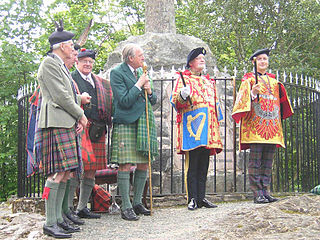
A private officer of arms is one of the heralds and pursuivants appointed by great noble houses to handle all heraldic and genealogical questions.
Robert Douglas Watt, is a former Canadian museum curator and officer of arms who served as the first Chief Herald of Canada. He was appointed at the foundation of the Canadian Heraldic Authority in 1988, and he was succeeded by Claire Boudreau in 2007.
William George HuntTD FCA served as Windsor Herald of Arms in Ordinary at the College of Arms in London from 1999 to 2017.

The coat of arms of Namibia is the official heraldic symbol of Namibia. Introduced at the time of independence in 1990, it superseded the earlier coat of arms used by the South African administration of the territory.
Major Francis Jones CVO, TD, DL, FSA, MA, KStJ, was an author, archivist, historian and officer of arms.
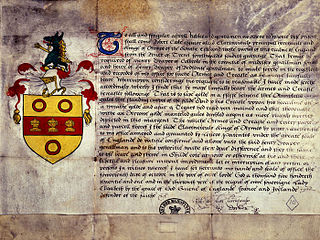
A grant of arms or a governmental issuance of arms, are actions by a lawful authority such as an officer of arms or State Herald, conferring on a person and his or her descendants the right to bear a particular coat of arms or armorial bearings. It is one of the ways in which a person may lawfully bear arms in a jurisdiction regulating heraldry, another being by birth, through inheritance.

The coat of arms of the Western Cape is the official heraldic symbol of the Western Cape province of the Republic of South Africa. It has been in use since 1998.

Thembinkosi 'Themba' Mabaso, State Herald, or National Herald, of South Africa, is director of that country's Bureau of Heraldry.
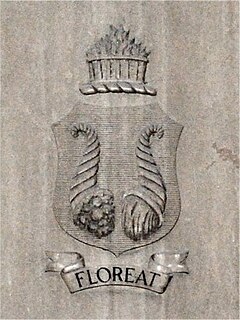
South African heraldry dates back to the 1650s, inheriting European heraldic traditions. Arms are borne by individuals, official bodies, local authorities, military units, and by a wide variety of organisations. South Africa has had its own heraldic authority since 1963, to provide armigers with legal protection, and to promote high standards of armorial practice.
Norden Hartman (1921–1989) was a South African archivist and herald.

Frederick Gordon Brownell OMSS SM and Bar MMM JCD KStJ, D.Phil is a South African herald, vexillologist, and genealogist.
A heraldic authority is defined as an office or institution which has been established by a reigning monarch or a government to deal with heraldry in the country concerned. It does not include private societies or enterprises which design and/or register coats of arms.

The coat of arms of the Transvaal was the official heraldic symbol of the South African Republic from 1866 to 1877 and again from 1881 to 1902, and later the symbol of the Transvaal Province from 1954 to 1994. It is now obsolete.

The Court of the Lord Lyon is a standing court of law which regulates heraldry in Scotland. The Lyon Court maintains the register of grants of arms, known as the Public Register of All Arms and Bearings in Scotland, as well as records of genealogies.

